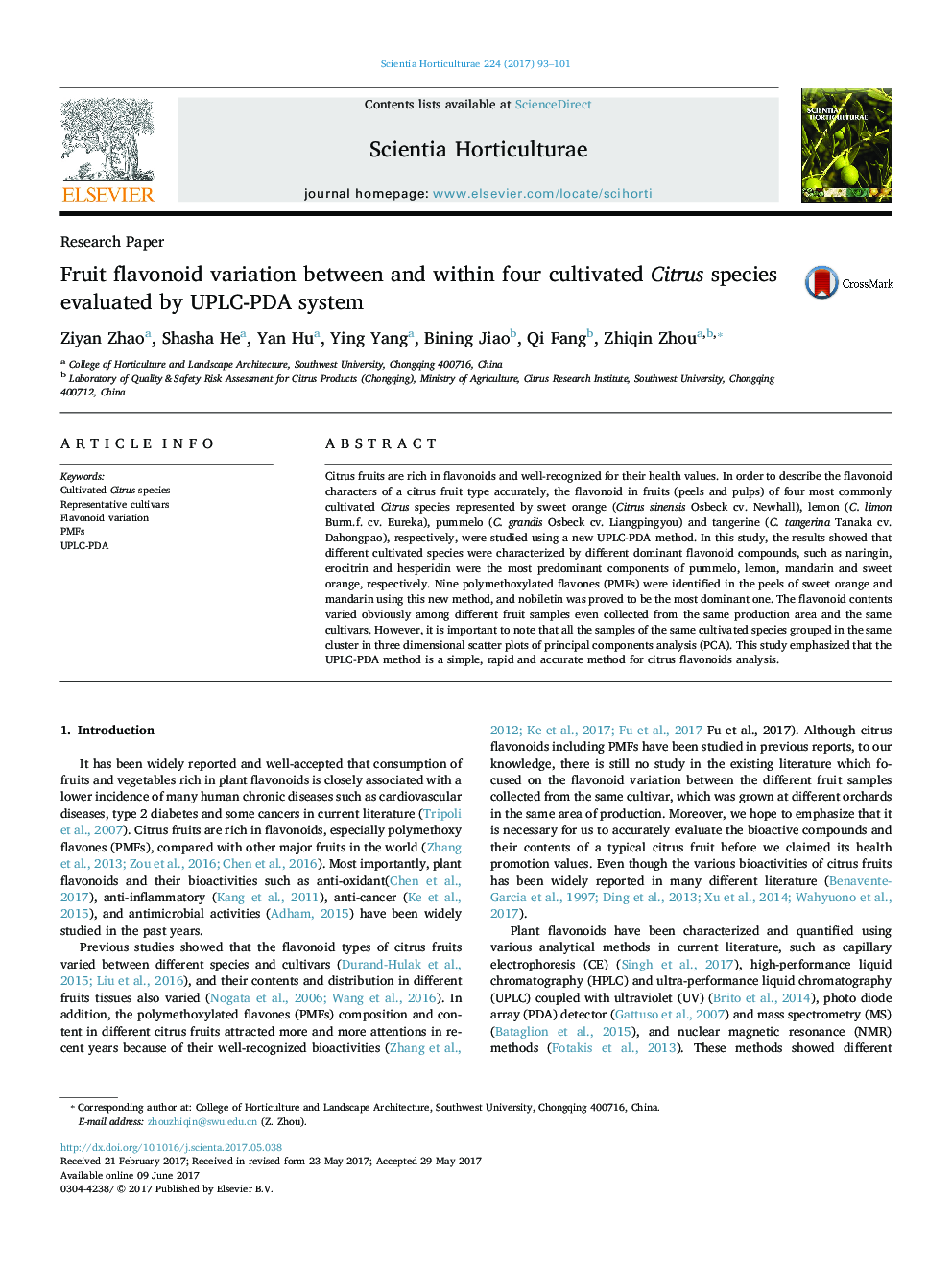| کد مقاله | کد نشریه | سال انتشار | مقاله انگلیسی | نسخه تمام متن |
|---|---|---|---|---|
| 5769400 | 1628774 | 2017 | 9 صفحه PDF | دانلود رایگان |

- Flavonoid profile of Citrus species is strictly controlled by genetic background.
- 'Deep-sampling' strategy was reported to be an appropriate evaluation method.
- Evaluation of flavonoids variation within a cultivar is necessary in future study.
- Dahongpao tangerine is an excellent source of citrus PMFs.
Citrus fruits are rich in flavonoids and well-recognized for their health values. In order to describe the flavonoid characters of a citrus fruit type accurately, the flavonoid in fruits (peels and pulps) of four most commonly cultivated Citrus species represented by sweet orange (Citrus sinensis Osbeck cv. Newhall), lemon (C. limon Burm.f. cv. Eureka), pummelo (C. grandis Osbeck cv. Liangpingyou) and tangerine (C. tangerina Tanaka cv. Dahongpao), respectively, were studied using a new UPLC-PDA method. In this study, the results showed that different cultivated species were characterized by different dominant flavonoid compounds, such as naringin, erocitrin and hesperidin were the most predominant components of pummelo, lemon, mandarin and sweet orange, respectively. Nine polymethoxylated flavones (PMFs) were identified in the peels of sweet orange and mandarin using this new method, and nobiletin was proved to be the most dominant one. The flavonoid contents varied obviously among different fruit samples even collected from the same production area and the same cultivars. However, it is important to note that all the samples of the same cultivated species grouped in the same cluster in three dimensional scatter plots of principal components analysis (PCA). This study emphasized that the UPLC-PDA method is a simple, rapid and accurate method for citrus flavonoids analysis.
99
Journal: Scientia Horticulturae - Volume 224, 20 October 2017, Pages 93-101